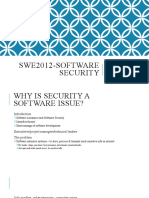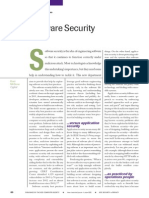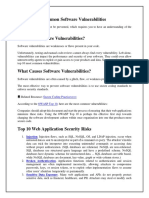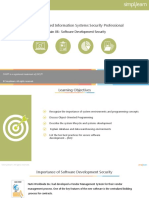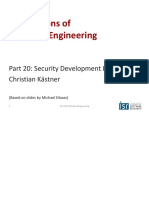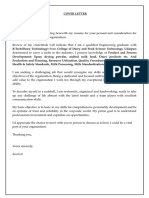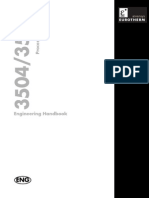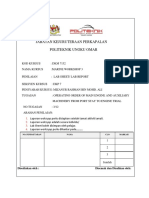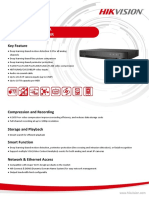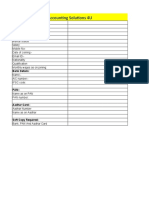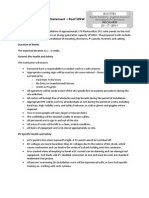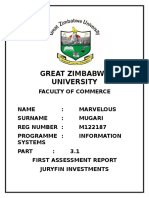0% found this document useful (0 votes)
17 views11 pagesSession-4 Software Threats and Sources of Insecurity
The document discusses threats to software security, categorizing them into those occurring during development and operation, highlighting insider threats and vulnerabilities exploited by external attackers. It emphasizes the critical shortcomings of relying solely on operational protections and the complexities of software that contribute to insecurity. Additionally, it points out the lack of training for project managers and engineers in secure application development, leading to inadequate security measures and potential vulnerabilities in software.
Uploaded by
singaporefreefire0000Copyright
© © All Rights Reserved
We take content rights seriously. If you suspect this is your content, claim it here.
Available Formats
Download as PPTX, PDF, TXT or read online on Scribd
0% found this document useful (0 votes)
17 views11 pagesSession-4 Software Threats and Sources of Insecurity
The document discusses threats to software security, categorizing them into those occurring during development and operation, highlighting insider threats and vulnerabilities exploited by external attackers. It emphasizes the critical shortcomings of relying solely on operational protections and the complexities of software that contribute to insecurity. Additionally, it points out the lack of training for project managers and engineers in secure application development, leading to inadequate security measures and potential vulnerabilities in software.
Uploaded by
singaporefreefire0000Copyright
© © All Rights Reserved
We take content rights seriously. If you suspect this is your content, claim it here.
Available Formats
Download as PPTX, PDF, TXT or read online on Scribd
/ 11












